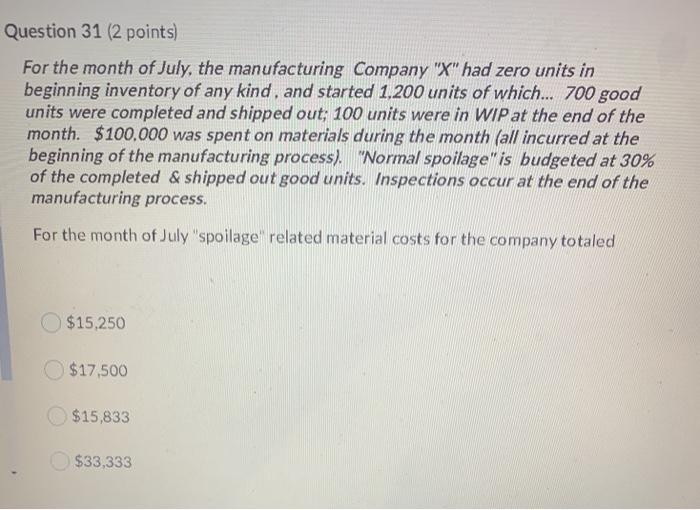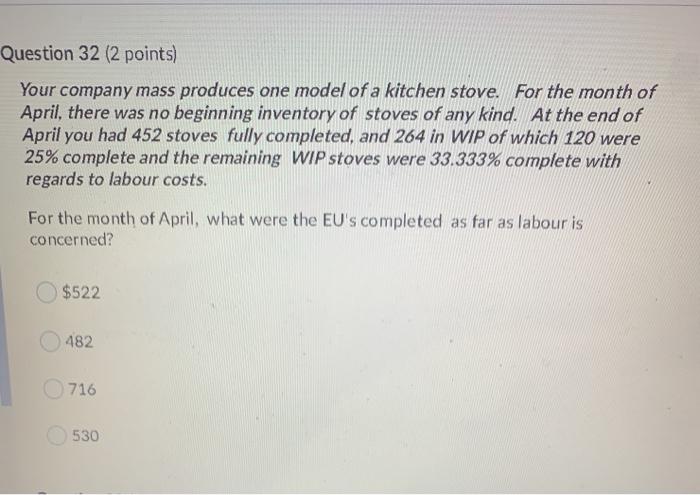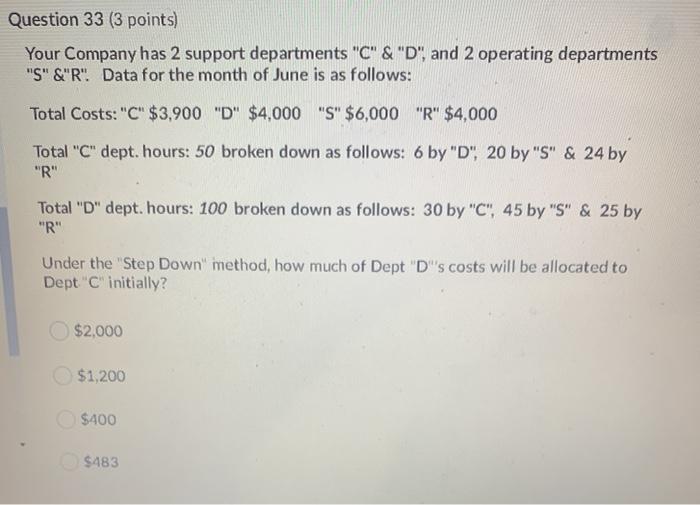Question 31 (2 points) For the month of July, the manufacturing Company "X" had zero units in beginning inventory of any kind, and started 1.200 units of which... 700 good units were completed and shipped out; 100 units were in WIP at the end of the month. $100,000 was spent on materials during the month (all incurred at the beginning of the manufacturing process). "Normal spoilage" is budgeted at 30% of the completed & shipped out good units. Inspections occur at the end of the manufacturing process. For the month of July "spoilage related material costs for the company totaled $15,250 $17,500 $15,833 $33,333 Question 32 (2 points) Your company mass produces one model of a kitchen stove. For the month of April, there was no beginning inventory of stoves of any kind. At the end of April you had 452 stoves fully completed, and 264 in WIP of which 120 were 25% complete and the remaining WIP stoves were 33.333% complete with regards to labour costs. For the month of April, what were the EU's completed as far as labour is concerned? $522 482 716 530 Question 33 (3 points) Your Company has 2 support departments "C" & "D", and 2 operating departments "S"&"R". Data for the month of June is as follows: Total Costs: "C" $3,900 "D" $4,000 "S" $6,000 "R" $4,000 Total "C" dept. hours: 50 broken down as follows: 6 by "D", 20 by "S" & 24 by "R" Total "D" dept. hours: 100 broken down as follows: 30 by "C", 45 by "S" & 25 by "R" Under the "Step Down" method, how much of Dept "D"'s costs will be allocated to Dept "C" initially? $2,000 $1,200 $400 $483 uestion 34 (1 point) Last month your company had an unfavourable "sales-volume cm variance". This could be explained by a slightly favourable sales-mix cm variance" offset by a significantly unfavourable "market-size cm variance True False Question 35 (1 point) A Balanced Scorecard approach emphasizes both historical and future oriented measures that contribute to the success of an organization's strategy none of the listed answers are correct future oriented measures that contribute to the success of an organization's strategy historical oriented measures that contribute to the success of an organization's strategy










